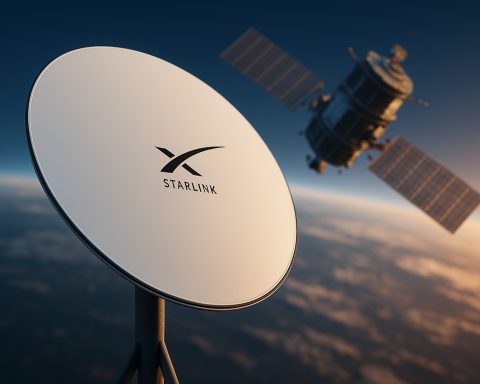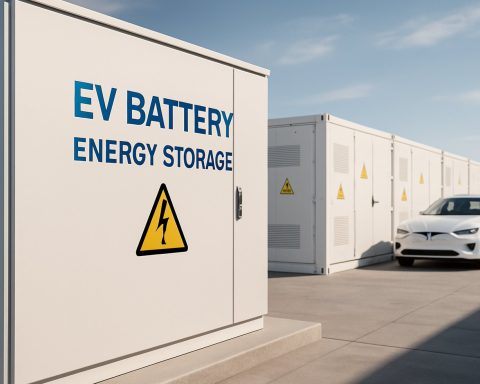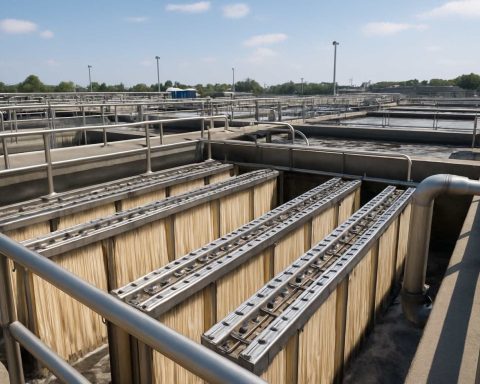- CATL announces sodium-ion batteries, poised as a cold-weather solution for electric vehicles (EVs) at the Shanghai Auto Show.
- Sodium-ion batteries excel with cold climate performance, charging efficiently at temperatures as low as -40°F.
- Sodium is more abundant and environmentally friendly than lithium, offering a sustainable alternative for the EV market.
- Despite lower energy density (175 Wh/kg), sodium-ion batteries are ideal for urban EVs and hybrids, with ranges up to 310 miles.
- Safety testing reveals sodium-ion batteries resist physical damage better than lithium-ion counterparts.
- CATL plans mass production of high-voltage EV sodium-ion packs by June and low-voltage auxiliary packs by December.
- The auxiliary sodium-ion packs aim to replace lead-acid batteries and support features like vehicle-to-load (V2L) capability.
Electric vehicle enthusiasts are buzzing with excitement as CATL, the world leader in lithium-ion batteries, launched its next big innovation in battery technology: sodium-ion batteries. These new batteries, unveiled ahead of the highly anticipated Shanghai Auto Show, promise to keep electric vehicles charged and running smoothly even in the harshest cold weather.
For years, the idea of sodium-ion batteries was sidelined in favor of the more prevalent lithium-ion varieties, which already dominate today’s EV market. However, the recent reveal by CATL positions sodium as a potential game-changer, especially for cold climates and compact vehicles. The allure of sodium-ion batteries is based on their ability to perform under frigid conditions—a feat unrivaled by their lithium counterparts. Where most conventional batteries falter as temperatures plummet, these innovations boast the capability to charge at nearly full speed, even when thermometers hover around -40 degrees Fahrenheit.
Why sodium? It’s simple yet compelling: availability and environmental impact. Sodium is up to 1,000 times more abundant than lithium and leaves a significantly smaller environmental footprint. While lithium-ion batteries maintain their edge in energy density, sodium-ion’s advantages align well with emerging needs in the EV market, particularly for compact EVs and hybrid vehicles. Imagine driving a tiny city car in the depths of winter, the battery resiliently powering onward while other vehicles struggle to get started.
Although sodium-ion batteries lag behind in energy density—with CATL’s high-voltage version providing 175 watt-hours per kilogram compared to the typical 200–300 Wh/kg of lithium-ion—it’s not a deal-breaker for urban and short-distance travel. A potential range of 124 miles for plug-in hybrid EVs and up to 310 miles for pure EVs, based on China’s testing cycles, presents a viable option for urban dwellers and micro-EV enthusiasts worldwide.
Beyond cold-weather toughness, safety is another hallmark of CATL’s sodium-ion breakthrough. The battery packs have undergone rigorous testing, surviving severe physical tests without the catastrophic failure associated with lithium-ion counterparts. From compression trials to nail penetration, these batteries remain stable—providing peace of mind for users.
CATL’s venture also includes a low-voltage sodium-ion pack designed to make lead-acid batteries obsolete. This auxiliary battery, catering to trucks, promises superb cold-weather performance and enhanced functionality, like vehicle-to-load (V2L) capability, allowing drivers to power external devices—a hot coffee, perhaps—without a worry.
These innovations are not just on the drawing board. Mass production is set to commence by June for high-voltage EV packs, and by December for the low-voltage auxiliary packs. Investors, environmentalists, and consumers alike will be watching closely as these batteries hit the market, promising not just a new way to power our cars, but a new way to think about what’s possible in sustainable transportation.
Meet the Future of Electric Vehicles with Sodium-Ion Batteries
What Are Sodium-Ion Batteries?
Sodium-ion batteries are poised to revolutionize the electric vehicle (EV) market, offering a sustainable and efficient alternative to the ubiquitous lithium-ion batteries. CATL, a powerhouse in battery innovation, has unveiled sodium-ion batteries that deliver performance even in extremely cold conditions—a significant advantage over lithium-ion counterparts.
Key Advantages Over Lithium-Ion Batteries
1. Cold Weather Performance: Sodium-ion batteries excel in frigid conditions, maintaining charging capabilities even at -40 degrees Fahrenheit, a major limitation for lithium-ion batteries.
2. Abundant Material: Sodium is significantly more abundant than lithium, which positions sodium-ion technology as a more sustainable and environmentally friendly option, reducing dependency on scarce resources.
3. Safety Improvements: These batteries stand up to physical stress tests, such as compression and nail penetration, without risking catastrophic failure, addressing safety concerns present with lithium technology.
Potential Market Impact
– Urban and Compact EV Market: With sodium being more cost-effective and capable of maintaining stable performance in urban settings, sodium-ion batteries are ideal for compact EVs and hybrids.
– Extended Range: While the energy density of sodium-ion batteries (175 Wh/kg) trails lithium-ion (typically 200–300 Wh/kg), their practical range is adequate for city driving and short-distance travel.
Industry Trends and Predictions
The introduction of sodium-ion technology could reshape the battery industry landscape. As mass production kicks off, expected by June for high-voltage packs and December for low-voltage auxiliary ones, we anticipate notable shifts:
– Pricing Competition: With sodium ions being cheaper to produce due to the abundance of material, these advancements could lead to more affordable EV options.
– Hybrid Adaptation: Sodium-ion’s performance metrics cater well to hybrid models, promising a niche yet growing market.
– Sustainability Focus: Environmental benefits will appeal to eco-conscious consumers and drive industry-wide interest in adopting more sustainable materials.
Practical Use Cases
– Vehicle-to-Load Functionality: Sodium-ion auxiliary batteries provide advantages such as V2L capabilities, allowing EVs to power external devices—a boon for road trips or outdoor activities.
– Substitution for Lead-Acid Batteries: CATL’s low-voltage sodium-ion batteries aim to replace lead-acid batteries, offering higher performance and safety.
Controversies and Limitations
While promising, sodium-ion batteries are not without challenges. The lower energy density remains a hurdle for applications requiring long-range capabilities. Ongoing research and development aim to overcome this limitation, potentially improving the efficiency of this technology over time.
Actionable Tips for Consumers
– Consider Usage Needs: For urban dwellers or those in cold climates, sodium-ion batteries present a reliable option. Evaluate your driving patterns and climate conditions to determine fit.
– Monitor Market Offers: As mass production of sodium-ion batteries ramps up, stay informed about emerging EV models and updates.
– Research Sustainability: Compare the environmental impacts of different battery technologies, utilizing resources such as CATL to make informed decisions.
Conclusion
Sodium-ion batteries are more than just an innovative alternative; they represent a shift towards sustainable, efficient energy solutions for electric vehicles. As production scales up, pay attention to new models and technologies leveraging this advancement, potentially making your next EV purchase smarter and more environmentally friendly.











